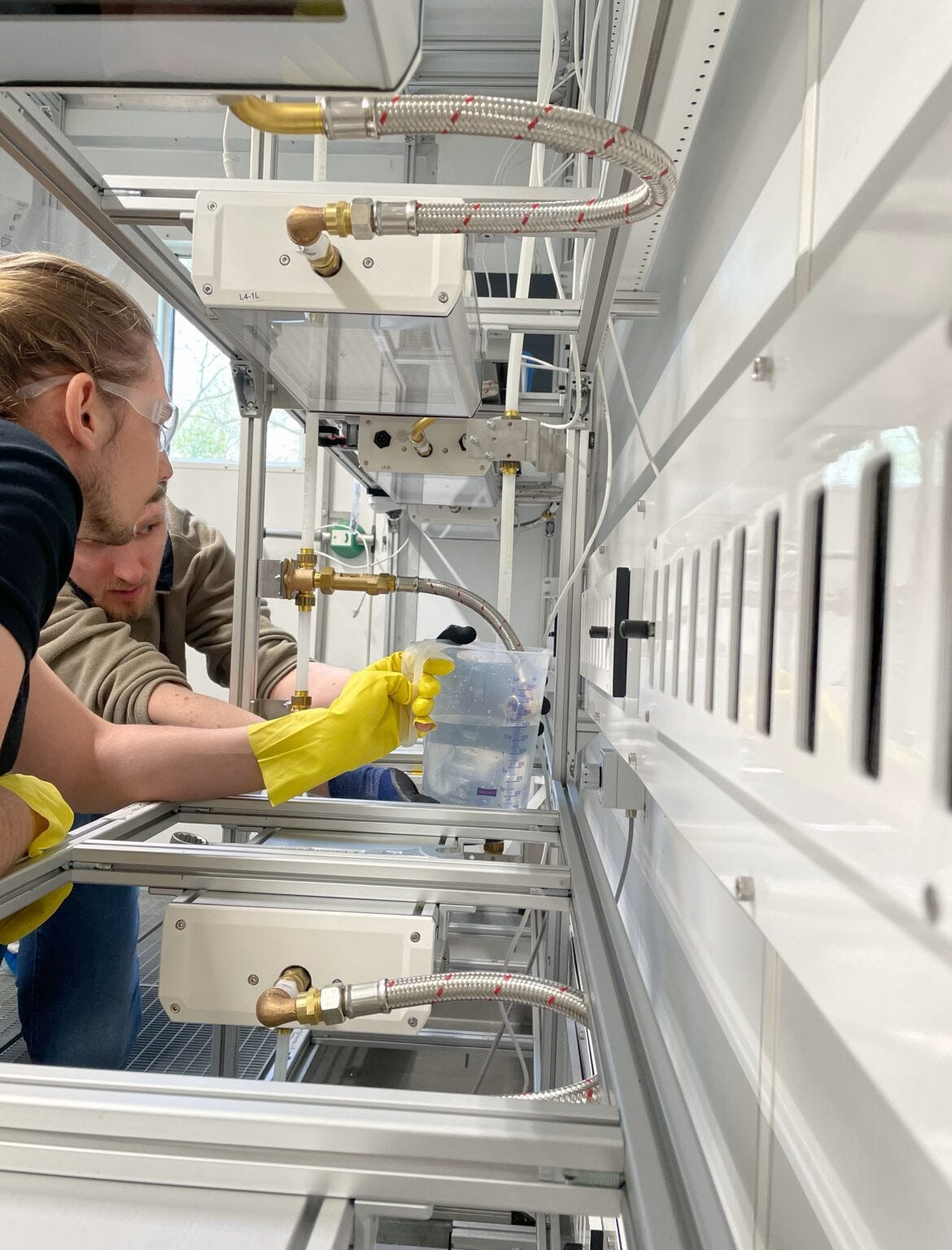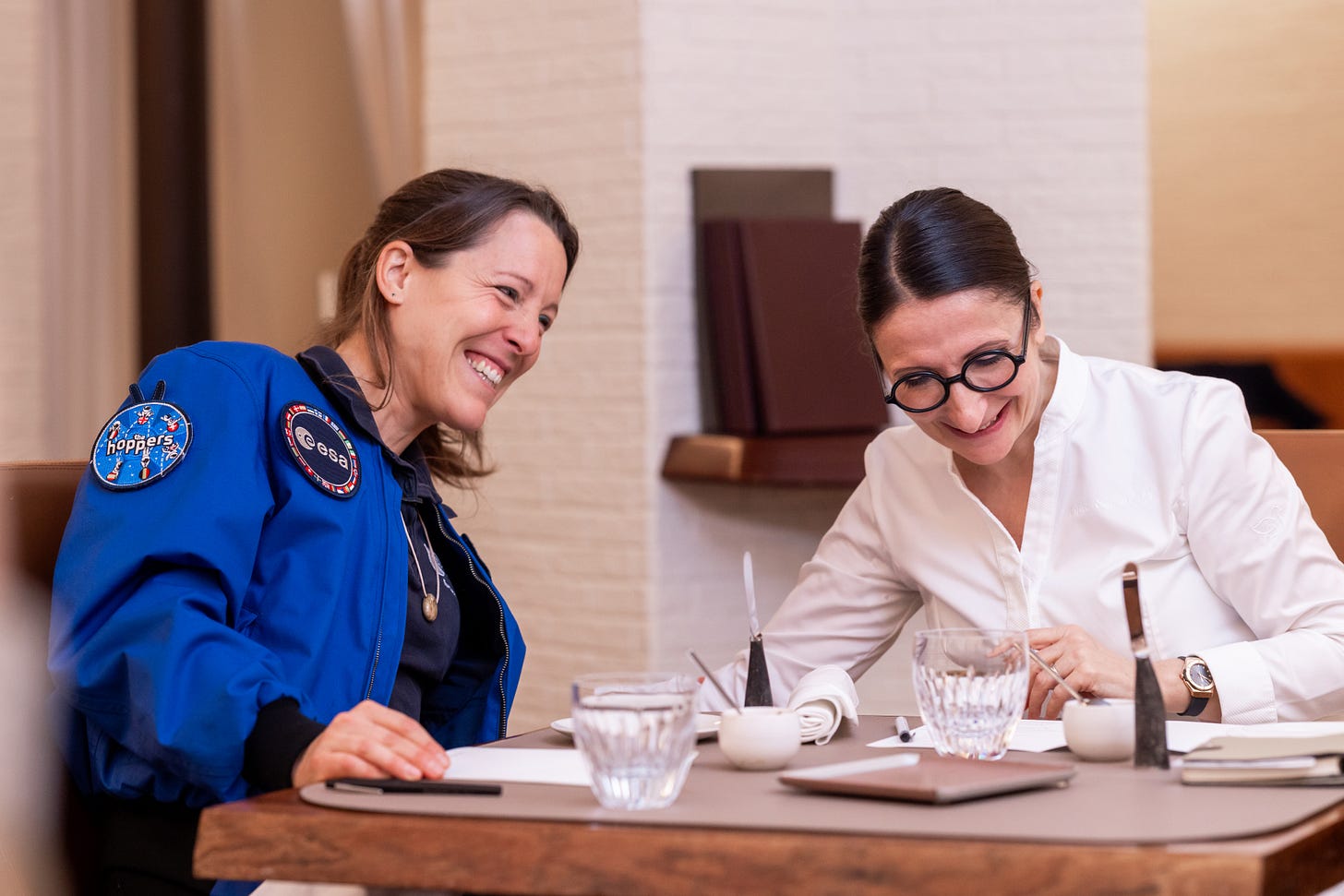Gardeners of the Galaxy Mission Report: 8 July 2025
My Top 10 Stories from the world of space plants and gardening. This week we've got an update on EDEN LUNA, a Biosphere 2 retrospective & French food heading for the ISS!
Hello, Gardeners of the Galaxy! Welcome to this week's Mission Report.
1: A milestone for the EDEN LUNA build

The new EDEN LUNA plant growth facility has reached an important milestone, with the installation of its Thermal Control System (TCS). The custom-made system has been redesigned from the previous EDEN ISS version, to meet the new LUNA requirements and mission objectives. It interfaces with the Lighting Control System and the Atmosphere Management System for the Greenhouse section, using an on-board computer to control a closed and interactive loop system.
When EDEN LUNA is complete, it will become part of the LUNA analog facility in Cologne.
Read more: EDEN LUNA – keeping it cool with its new Thermal Control System
2: Cannabis seeds in space
In an article written before MayaSat-1 sank into a watery grave, Icelandic agricultural expert Meta Pahernik explained why she was launching Cannabis seeds into space.
"Hemp is an incredibly hardy plant. It can grow in very harsh conditions – from deserts to cold regions – and not only does it germinate, but it can produce a crop very quickly. The plant has an incredible range of uses, from food and textiles to wood products – and the best part is that it also has great medicinal value," she said. “We want to see how biological samples react to microgravity and radiation in space. Hopefully we get the seeds back and they germinate – and then we would have Icelandic hemp that has gone beyond Earth's orbit.”
Fingers crossed the team get another chance to send their research into space and retrieve it.
Read more: Hampfræ frá Íslandi send út í geim með SpaceX
3: From Earth to Space: Interstellar Lab’s Journey with CEO Barbara Belvisi
4: Biosphere 2 and its lessons for humanity
BBC Future revisits the Biosphere 2 experiments that saw a small team of scientists lock themselves into a sealed habitat in Arizona in an attempt to create a self-sustaining ecosystem. They tended crop plants, recycled their wastewater, and lived alongside a tropical rainforest, a savannah, a fog desert, a mangrove-studded wetland and an ocean with includes its own living coral reef.
Derided at the time as a failure, experts now see that Biosphere 2 provided valuable lessons about ecology, atmospheric science and the need for caring for our environment.
"It wasn't a failure," says Caltech historian Lisa Rand. "I think it was actually ahead of its time."
Biosphere 2 is now a research facility, and deputy director John Adams hopes that it can “do for ecologists what the Large Hadron Collider is doing to improve physicists' understanding of particle physics, and what the James Webb Telescope is doing for astronomers striving for deeper glimpses into the universe.”
Read more: How the Biosphere 2 experiment changed our understanding of the Earth
5: Researching reusable period products in space
The AstroCup team launched two commercially available menstrual cups into space on a sub-orbital flight in October 2022, with a matching pair remaining on Earth as controls. During the 9-minute flight, the cups were subjected to 16 g, yet performed flawlessly. The results suggest that menstrual cups could be a viable solution for managing menstruation during space missions. Future studies must examine how the devices perform across multiple menstrual cycles, including cleaning and storage procedures in the environment of space.
Read more: Menstrual cups tested in space flight conditions for the first time
6: The UK’s first professional female astronomer
Annie Walker started working at the Cambridge Observatory in 1879, when she was only 15. Astronomers have assumed that she was a computer, dealing with complex calculations for the men who used the telescopes. However, new research suggests that she observed thousands of stars and was actually the first British professional female astronomer.
Read more: Unsung observatory worker was UK’s first professional female astronomer, experts say
7: Upcoming Crew-11 launch

NASA is targeting late July/early August for the launch of Crew-11 to the International Space Station (ISS).
8: French food heading to the ISS

ESA astronaut Sophie Adenot will have gourmet French cuisine for her upcoming εpsilon space mission, with a special menu created together with Anne-Sophie Pic, the world’s most Michelin-starred female chef.
Starters:
· Foie gras cream on toasted brioche, with candied lemon
· Lobster bisque with crab and caraway
· Parsnip velouté with curry and smoked haddock
· Onion soup with pink peppercorns and gratinéed croutons
Main courses:
· Shredded braised beef with black garlic and smoked vanilla
· Poultry with voatsiperifery pepper (Piper borbonense), tonka bean (Dipteryx odorata), and creamy comté cheese polenta
Desserts:
· Coconut and smoked vanilla rice pudding
· Chocolate cream with hazelnut flower and coffee
“Anne-Sophie’s menu will not only surprise our taste buds and delight our palates; it will also allow us to reconnect with the Earth. Her cuisine signature is deeply influenced by the terroir. This is important to me because I grew up in the countryside, and it will remind me of my roots,” Adenot said.
Read more: A pinch of France in space
9: Underwater analog habitats
After 20 incredible years with NASA, Dr Andrew Abercromby has joined DEEP’s mission of making humans aquatic. There are similarities in the human and technological challenges that must be overcome to support human life in space and under water, he says. And a subsea space analog is a great way to prepare people for a trip into space.
Read more: Why the path to space is via the ocean
10: Gardening in science fiction
And I thought you might enjoy this 2023 article from Clarkesworld magazine, in which Carrie Sessarego explores humanity’s need to garden, and how that impulse finds its way into science fiction.
Read more: Gardens in the Sky: Gardening in Science Fiction
Don’t forget that I regularly post fresh content to my Space Botany website. This week you can read about using bioplastic shelters to grow algae on Mars.
I'll be back in your inboxes next week. Thanks for reading and being part of the Gardeners of the Galaxy community.
Ex solo ad astra,
Emma (Space Gardener)



